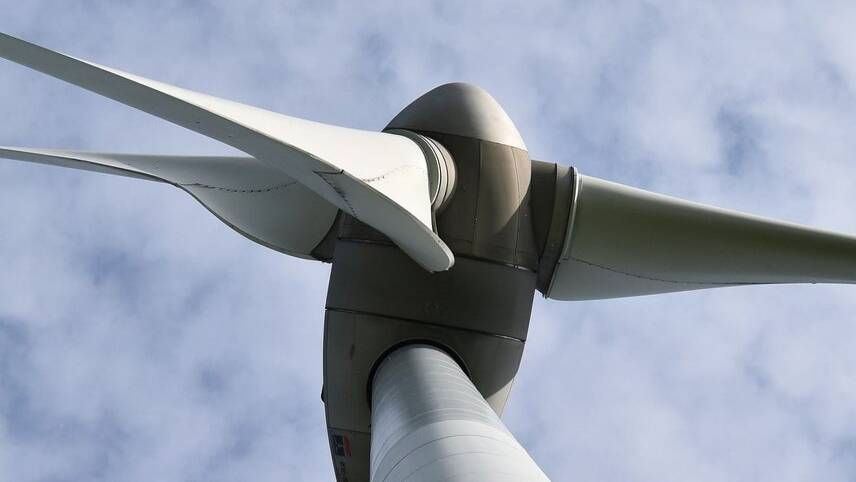You’ve reached your limit!
To continue enjoying Utility Week Innovate, brought to you in association with Utility Week Live or gain unlimited Utility Week site access choose the option that applies to you below:
Register to access Utility Week Innovate
- Get the latest insight on frontline business challenges
- Receive specialist sector newsletters to keep you informed
- Access our Utility Week Innovate content for free
- Join us in bringing collaborative innovation to life at Utility Week Live

The UK has committed to stretching targets on renewable generation. However, less attention has been given to the end state – the operation of a fully decarbonised energy system. In this article for Utility Week, Energy Systems Catapult’s Beth Warnock discusses the urgent need to find replacements for the stores of fossil fuels our energy system currently relies on.
The ongoing war in Ukraine has reinforced the urgency with which Britain and the world must wean itself off fossil fuels – our energy security in the years ahead depends on it.
Despite last week’s lukewarm industry reception to the government’s Energy Security Strategy, Britain’s ambitious emissions reduction targets have invigorated the energy sector, with commitments to operate a fully decarbonised electricity system by 2035 and reach net zero by 2050.
The hard work and planning must start now. Today we’re still working with an electricity system created by the industrial revolution, but the way we produce and consume electricity is changing rapidly and our system needs to keep up.
Our operability report, published today in collaboration with the Faraday Institution and TNEI, aims to share some fresh thinking and prompt discussion around how Britain will operate a stable energy network in a net zero world.
As a power systems engineer, the engineering challenge excites me, but there are societal drivers at play too. Political decisions and policymaking will shape our energy future just as much as technical progress.
One of the key themes we explore in our report is how we replace the stores of fossil fuels we currently have. The simple answer is long duration inter-seasonal storage, where we store excess renewable energy from the summer and use it to manage peak demand in winter. The harder question to address is how much storage do we need?
Without an urgent and significant rethink of the system and markets, it cannot be taken for granted in a net zero world that there’ll always be enough energy when needed over a season.
Each winter will bring different needs, and the amount of long duration storage required will vary depending on the weather. We might see a cold, calm weather system sitting over northern Europe for weeks, reducing wind power and the capacity for interconnectors to provide resilience.
National Grid ESO touches on this scenario in its Day in the Life 2035 forward look. To manage the shortfall in wind and solar, hydrogen is used to produce electricity as a type of long duration storage.
Our report argues that unless a robust security of supply standard for rare system stress events is agreed now – particularly around the role of storage – there’s a risk a future energy market won’t be able to deliver the megawatt-hours in the moment of need.
The problem is not an engineering challenge – the technology and capability will be delivered if the standards are agreed – but a political one. To what extent should operability include obligations to secure supply over an entire season, rather than just securing the network and real-time balance of power? And as a society, how much are we prepared to pay for the insurance that we’ll have enough energy for a cold winter?
Cost analyses in our report indicate that storage reserved for unusually onerous conditions, and which cycles very infrequently, will be very expensive – easily matching and often far exceeding the £/MWh price spikes seen recently from marginal generators in the balancing mechanism.
We don’t claim to have the answers in our report, but we needn’t look far to start the conversation about possible solutions. The gas network has a security of supply standard of ensuring enough gas is available to meet demand in the coldest year you would expect to see in 20 years. If we were to apply this same standard to the electricity network, we would have a clearer idea of how much long duration storage is required. There is still a question of how we value energy storage that may not be called upon from one year to the next, but clarity around how much we want is a great starting point.
Day to day operations of energy systems and meeting demand second by second is an engineering challenge. To get to real-time operations, many decisions are made years in advance – and that means making decisions today if we’re to influence how successfully we operate a net zero electricity system in 2035.
Read our full report – A Zero carbon Energy System: The Operability Challenge – for more on the role that storage, replacement of fossil fuel stores and societal choices could have on our future energy system.




Please login or Register to leave a comment.